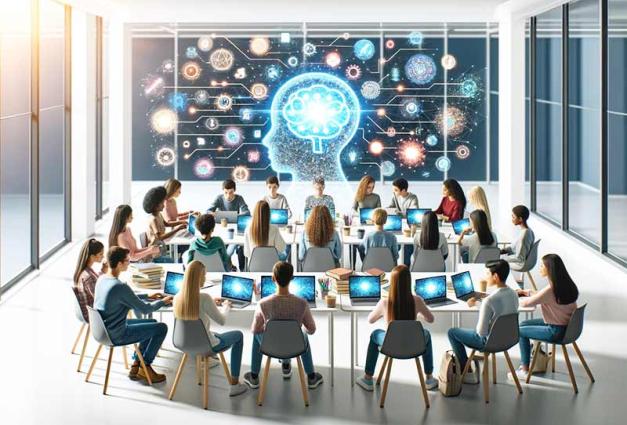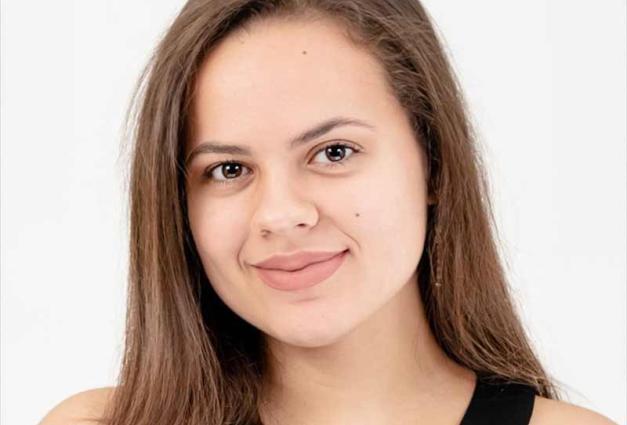Higher education has been hard at work trying or not trying to open up this fall during the COVID-19 pandemic. As a personality psychologist interested in development it has been a bit of an out-of-body experience to watch discussions about how best to handle this challenging situation without much of a conversation about the modal characteristics of college students and how that might affect what you do as an institution. As we implement and change plans over the next year, it might be prudent to condition those plans on who we are asking the most of—students.
To that end, I offer up the following overly simplistic psychological description of the typical undergraduate population and how that could inform our efforts. We know a decent amount about undergraduates (after all, that appears to be the only population psychologists study[1]), and it would be tragic not to employ that knowledge when considering the changes we plan for the fall.
So who are we dealing with? From a wide range of studies, we know the following about college-age students. Remember, these are averages. There are exceptions.
- Mentally, college-age students possess a peak power to manipulate information[2]. They have yet to acquire their peak amount of information—that comes with age and experience—but their minds are, relative to other ages, sharp and agile. If you want someone to power through mentally taxing material, college-age students are ready for the challenge.
- Motivationally, the average college student, relative to older populations, is blessed with an abundance of energy and enthusiasm. If anything, they can be burdened with too much enthusiasm. Of course, that is another feature of the college experience that we feel to be so important—that students get the chance to explore and invest and discover and through doing so find their path forward. Inevitably, that experience will lead them to winnow their aspirations and focus more strongly on fewer options going forward[3].
- Characterologically, college students have only just begun on the path to the maturational changes that most people agree to characterize the typical adult. What this means is that the typical college student is equipped with ample physical, mental, and motivational skills, but still has some work to do on social and emotional skills. Succinctly, college students, relative to older individuals, are less warm, conscientious, and emotionally stable[4]. On the flip side, they tend to be, relative to older populations, a bit more narcissistic, impulsive, and prone to emotional swings[5].
- In terms of psychopathology, we also know that this is a time of vulnerability[6]. It is during this time of the life course that most forms of psychopathology peak—depression, anxiety, eating disorders, and substance use disorders.
- I’d like to emphasize three subgroups of students that both demonstrate the variability in the typical college student, but are also very important to consider when we think of the policies we are going to implement because of COVID-19.
- First, one subgroup could be characterized as the non-compliant (lower conscientiousness, lower agreeableness, & higher impulsivity). These are the students who will, at the very least, ignore our pleas to use masks, socially distance, and avoid large gatherings. At most, they will be willful and question authority. Steinberg covered these students very nicely in an editorial in the NY Times. For these students, working against the rules of authority is not an anomaly, but their duty. And, higher education is their benign authority figure to rail against.
- The second subgroup, the high achievers, occupies the opposite end of the constellation of qualities. These students are studious, highly motivated, and are highly concerned with their performance in our classes because they have serious long-term goals—to be a doctor, scientist, or entrepreneur. Their vulnerability lies in the fact that they may be more than willing to do things that may end up hurting them vis a-vis COVID-19, but for what we might think are laudable reasons.
- The vulnerable make up the third subgroup. These students are those who are more vulnerable to the stress that comes with uncertainty, and COVID-19 ratchets up the uncertainty in ways we cannot anticipate. Estimates of upwards of 40% of college students bring with them increased vulnerability for various psychological challenges such as depression, anxiety, panic attacks, and various other issues. These students will be at increased risk for problems when the university opens up in the fall.
How do we use this information?
In the majority of universities that have chosen some form of hybrid or fully open, in-person education, we are asking students to: 1) take a lot more, highly regulated actions that will require heightened daily discipline, at least in relation to health and symptomatology; 2) be much more socially isolated than before given social distancing and group restrictions; 3) commit to serious communitarian behaviors and attitudes that would be needed in order to comply with many, many additional requests from campus; and 4) tolerate much more uncertainty than normal.
Given what we know about students in general, it is clear that this is a request that does not fit with their existing set of social and emotional skills. We are asking students to be disciplined, conscientious, and compliant to degrees not typically found on college campuses and at levels not typically asked of students. By opening up and hosting in-person interactions with thousands of students, we are also creating a lot of uncertainty for everyone involved.
That said, judicious investments can be made based on the knowledge of how our students will behave. That a significant proportion will be inclined not to comply with centralized, inflexible mandates from university leadership can inform the policies and programs we create. It seems, for example, that many institutions are bringing students back based on the assumption that their students will fall into place and comply with mask-wearing, social distancing, and testing (if available). This seems naive at best and foolish at worst. It seems unavoidable that the non-compliant students will return to campus and return to old ways and go to bars and parties with multiple, unmasked friends risk creating superspreader events. These students will then become the reservoir of COVID-19 that flings out repeated waves of infections to their community. While outbreaks may not risk the well-being of students very much, they will have potentially catastrophic consequences for university communities and especially older individuals who live therein.
What should we do about the non-compliers? Social science offers recipes for carrots—monetary incentives, bingo boards, token economies all meant to increase cooperation—and recipes for sticks—sanctions including being suspended that might modify their inclinations and behaviors. But, of course, these students may still turn around and become so uncooperative that they simply avoid our efforts. At the very least, I believe that we need to plan for the existence of the non-complying student and that they will make up a bigger chunk of our student body than we care to admit. If we do, our models and prognostications will be far more realistic.
What of the high achievers? How do we avoid having them come to class when they are sick because they feel they need to show us how motivated they are to do a good job? Largely, I think this is on the professoriate. Some of us tend to be a little, shall we say, “hard-nosed.” We reward high effort, or the appearance thereof, with good grades and praiseworthy letters of recommendation. It might be in our best interest to reconsider this approach, at least temporarily, so that students will be forgiven, if not praised for doing something as simple as staying home when and if they feel the onset of any symptoms. This will be especially important for those schools which do not open with a robust testing program (i.e., the majority of schools in the U.S.).
Finally, what can we do for the vulnerable student? The answer is obvious, but costly. We need to ramp up our mental health resources to handle the inevitable outbreak of mental health problems. Of course, in a context where schools are seeing their real-time budgets shrink precipitously because of the pandemic, it seems hopeless to argue that we need to spend money we do not have. Of course, administrators may want to consider the possibility that bulking up their mental health system will reap real benefits because it will help keep students in school.
In summary, our university communities face an unprecedented situation in the COVID-19 pandemic. We are all finding our way in the dark, trying to make the best of a challenging situation. Our students are unique, wonderful, and complex, but they are not a complete mystery, and some of what we know about them can and should be used to shine some light on our situation.
Adapted from: https://csbs.research.illinois.edu/what-we-know-about-college-students-to-help-manage-covid-19/
[1] Henrich, J., Heine, S. J., & Norenzayan, A. (2010). Beyond WEIRD: Towards a broad-based behavioral science. Behavioral and Brain Sciences, 33(2-3), 111.
[2] Deary, I. J., Corley, J., Gow, A. J., Harris, S. E., Houlihan, L. M., Marioni, R. E., ... & Starr, J. M. (2009). Age-associated cognitive decline. British medical bulletin, 92(1), 135-152.
[3] Atherton, O. E., Grijalva, E., Roberts, B., & Robins, R. (2020). Stability and Change in Personality Traits and Major Life Goals from College to Midlife.
[4] Soto, C. J., John, O. P., Gosling, S. D., & Potter, J. (2011). Age differences in personality traits from 10 to 65: Big Five domains and facets in a large cross-sectional sample. Journal of personality and social psychology, 100(2), 330.
[5] Hill, P. L., & Roberts, B. W. (2012). Narcissism, well-being, and observer-rated personality across the lifespan. Social Psychological and Personality Science, 3(2), 216-223.
[6] Kessler, R. C., Amminger, G. P., Aguilar‐Gaxiola, S., Alonso, J., Lee, S., & Ustun, T. B. (2007). Age of onset of mental disorders: a review of recent literature. Current opinion in psychiatry, 20(4), 359.
Brent Roberts is a Professor of Psychology and Director of the Center for Social and Behavioral Science at the University of Illinois at Urbana-Champaign.




